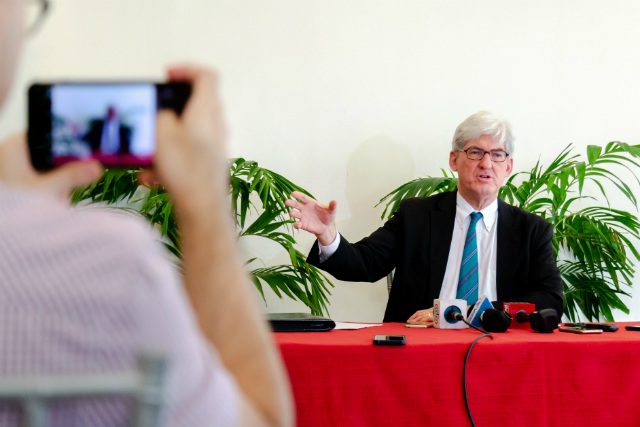SUMMARY
This is AI generated summarization, which may have errors. For context, always refer to the full article.

MANILA, Philippines – The Philippines is set to receive the biggest chunk of security assistance from the United States in the Indo-Pacific region, a visiting American official told Filipino reporters on Wednesday, August 29.
“We have close to $300 million in security assistance. The country that receives the largest chunk, as far as I understand, is the Philippines. So we’re looking at about $60 million of that $300 million to come to the Philippines,” said US Deputy Assistant Secretary of State Walter Douglas.
“It’s really a recognition of the long-term partnership we’ve had with the Philippines on the security front, in addition to the other things, so therefore we see it as a priority to help the Philippines. And that will cover all sorts of areas – peacekeeping, maritime domain awareness, all sorts of areas that we think we’re working very well with the Philippines,” he added.
Douglas is deputy assistant secretary of state for public affairs and public diplomacy in the Bureau of East Asian and Pacific Affairs at the US State Department. He was on a daylong trip to the Philippines.
As part of his visit, Douglas on Wednesday was explaining to journalists the Free and Open Indo-Pacific Strategy of the Trump administration.
The Indo-Pacific Strategy aims to improve trade in the Indo-Pacific region – including South Asia, particularly India – by ensuring that the region is free from coercion and maintains open seas and airways. (READ: U.S. Indo-Pacific Strategy: What’s in it for Philippines?)
Explaining the Indo-Pacific Strategy
“The idea is to create a situation here based on openness, based on transparency, based on well-defined rules, so that private sector money will move out of those [money centers] and more will come into this region,” Douglas said.
“I’d also like to note that it’s called Indo-Pacific. And why Indo? First of all, it’s not just India-Pacific. It’s Indo-Pacific. And while India is certainly the biggest economy over there, it really includes Bangladesh, Nepal, Maldives, Sri Lanka in that region,” Douglas said.
He said the Association of Southeast Asian Nations (ASEAN) plays a central role in the US Indo-Pacific Strategy. This is seen in how US President Donald Trump first announced the Indo-Pacific Strategy at a regional summit in Danang, Vietnam, in November 2017.
“The fact that the President announced the Indo-Pacific in Danang is not a coincidence. It’s a recognition that ASEAN is where all these different geographic areas and these economies meet,” Douglas said.
He was also asked if the 2016 Hague ruling on the South China Sea, which invalidated China’s claim over these waters, plays a role in the Indo-Pacific Strategy.
Douglas answered, “International law is the basis of so much of what we do, so I think it’s what the countries that are party to that should live up to, and then obviously others in the region should follow that too. There has been a legal ruling.” – Rappler.com
Add a comment
How does this make you feel?
There are no comments yet. Add your comment to start the conversation.